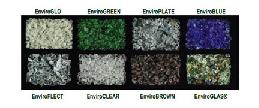
Eco Factor: Atmospheric CO2 recycled into alternative hydrocarbon fuel.
According to statistics, every 12 days the world consumes over a billion barrels of oil, which in turn release a trillion pounds of CO2 into the atmosphere. This CO2 results in rapid global warming, the devastating effects of which are already being recognized all over the world. Researchers at Pennsylvania State University have now developed a new technology that can help them ease atmospheric CO2 levels and can also be used to produce alternative fuels.
The solar-based system works in the presence of a photocatalyst – titanium dioxide in this case. Titanium dioxide or titania in the form of titania nanotubes incorporated with nitrogen reacts with light to convert CO2 into hydrocarbons. This conversion rate of this system is 20 times higher than all previous systems ever to be tested. While testing the system researchers were able to convert CO2 into methane, ethane, propane, butane, pentane and hexane along with other materials in small concentrations. If the system is brought into commercial use, it could not only remove huge amounts of CO2 from the atmosphere, but could also result in a new category of hydrocarbon fuels.
The Dark Side:
The system will yield hydrocarbon fuels by reusing atmospheric CO2, however, the fuels again will produce CO2. This will result in an endless circle of emissions and recycling. Renewable energy technologies like solar and wind energy show a better future where zero emissions is the main criteria.
Via: Physorg




